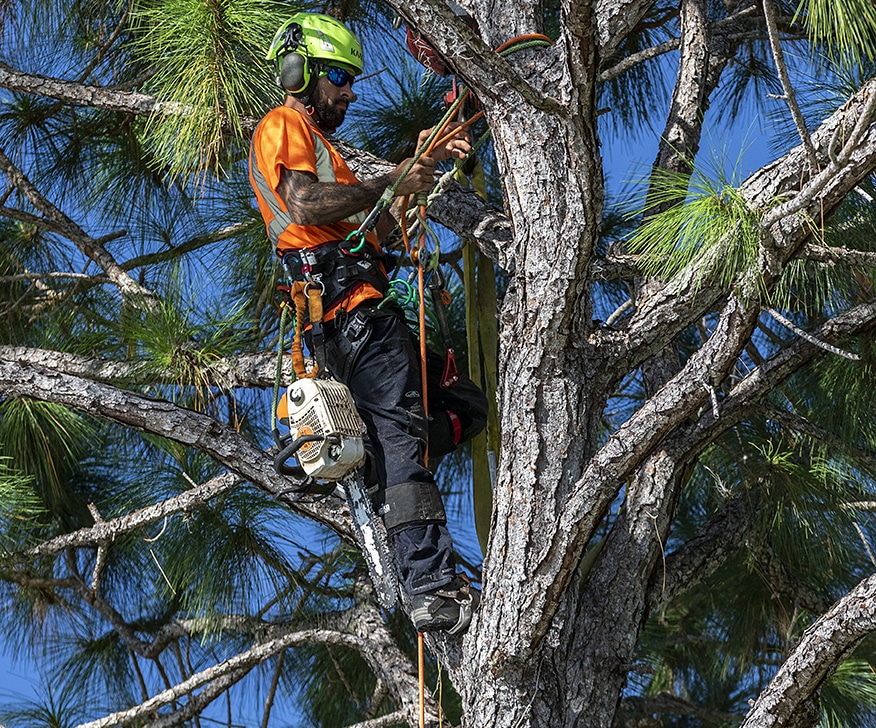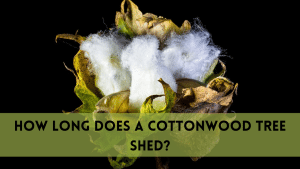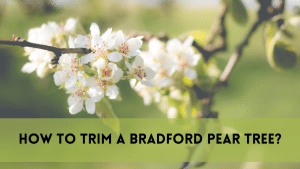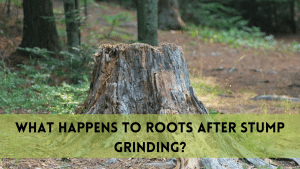Ash trees, with their elegant foliage and environmental significance, have been under threat due to the emerald ash borer infestation. But fear not, for this article is your comprehensive guide to saving ash trees. Whether you’re a concerned homeowner, an arborist, or simply an admirer of these majestic trees, read on to learn how we can protect and preserve ash trees for future generations.
Can Ash Trees Be Saved?
Ash trees, renowned for their towering beauty and environmental benefits, are facing a grave threat – the emerald ash borer. This invasive beetle has been wreaking havoc on ash tree populations across North America.
However, there is hope, and in this article, we’ll explore various strategies to combat this menace and ensure the survival of these beloved trees.
Recognizing the Emerald Debris Drill (EAB)
To settle on an educated conclusion about the destiny regarding your debris tree, it’s basic to comprehend the essential danger these magnificent trees face: the Emerald Debris Drill (EAB). The EAB isn’t simply any regular creepy crawly; a tricky trespasser has unleashed devastation on debris tree populaces across North America.
Origin and Invasion The EAB is originally from Asia and was first found in the United States at the beginning of the 2000s. Specialists accept it showed up in wooden delivery materials, making it an accidental stowaway. Since its appearance, the EAB has set out on a steady walk, leaving debris trees powerless against its horrendous hatchlings.
Larval Decimation
The essential explanation EAB postures that such a desperate danger to debris trees lies in its day to day existence cycle. During the summer, adult EAB beetles lay their eggs on the bark of ash trees. Once brought forth, the small hatchlings burrow underneath the bark, making serpentine displays as they feed on the tree’s cambium layer. This layer is answerable for moving water and supplements all through the tree, making it the soul of the debris.
As the hatchlings eat up the cambium layer, they really slice off the tree’s capacity to convey crucial assets. After some time, this pervasion prompts the tree’s downfall, frequently bringing about its possible demise. It’s a sluggish and evil interaction, and when noticeable side effects arise, the invasion might have previously arrived at a high level stage.
Indications of Pervasion
Distinguishing an EAB pervasion in its beginning phases is testing yet not feasible. To make an exact appraisal, being watching out for the accompanying warnings is fundamental:
Reduced Coverage: A debris tree experiencing an EAB invasion will start to show a diminishing shelter. This implies that the tree will continuously lose leaves, and branches will become sparser.
D-Formed Leave Openings: One of the indications of EAB presence is the rise of D-molded leave openings in the tree’s husk. Adult beetles use these small, distinctively shaped holes as exits.
Epicormic Shoots: In a frantic bid for endurance, swarmed debris trees might deliver groups of little, thick branches called epicormic shoots close to the foundation of the storage compartment.
Serpentine Displays: In the event that you strip back a part of the bark, you might find serpentine exhibitions left by EAB hatchlings. These winding passages are an obvious sign of invasion.
Dieback: As the invasion advances, whole branches or areas of the tree might pass on back, losing their leaves and becoming fragile.
The Quiet Danger Underneath: It’s fundamental to underline that EAB invasions frequently stay concealed until they arrive at a high level stage. The damage may already be extensive when your ash tree begins to show these obvious signs. Subsequently, early recognition and brief activity are basic in the fight against EAB.
Indications of Debris Tree Wellbeing
The Sign of a Sound Debris Tree
Before you choose whether to save or chop down your debris tree, it’s vital to comprehend what comprises a sound debris tree. Sound debris trees are vigorous, lively, and essential individuals from your scene, adding to both tasteful excellence and environmental equilibrium.
1. Full Shade
A sound debris tree flaunts a full, verdant shelter. The leaves ought to be a dark green tone, showing major areas of strength for an interaction. Shade and overall tree health are both provided by a thick canopy.
2. Smooth Bark
The bark of a solid debris tree is smooth and perfect. As trees age, some regular breaking and roughening may happen, yet broad bark harm or stripping is an indication of expected issues. Vigorous Growth Healthy ash trees grow quickly and have branches that grow outward and up. New development, noticeable as new shoots and branches, ought to be introduced each spring.
4. No Indications of Invasion
A sound debris tree shouldn’t give any indications of pervasion. There ought to be no apparent leave openings, D-formed etc., in the bark. Furthermore, you shouldn’t notice epicormic shoots or dieback in a solid debris tree.
5. Solid Roots
The soundness of a debris tree isn’t restricted to what you can see over the ground. A solid root foundation is fundamental for mooring the tree and guaranteeing it can get to water and supplements productively.
6. Strength to Ecological Pressure
Solid debris trees exhibit flexibility to ecological stressors like dry season, outrageous temperatures, and contamination. They ought to keep up with their imperativeness even in testing conditions.
7. Standard Leaf Drop
Debris trees, similar to every single deciduous tree, go through a characteristic leaf drop in the fall. Nevertheless, this ought to take place uniformly, with the leaves changing color before falling. Untimely or lopsided leaf drop can be an indication of stress or infection.
8. No Growth or Decay
Examine the foundation of your debris tree for any indications of contagious development or decay. These are marks of hidden issues that can think twice about a tree’s wellbeing.
Looking for Proficient Direction
While these signs can assist you with checking the general wellbeing of your debris tree, it’s fundamental to talk with a confirmed arborist or tree care proficient for a complete assessment. They can evaluate the tree’s wellbeing all the more precisely and give suggestions to upkeep or treatment, if important.
Keep in mind that ash trees, like all living things, can naturally appear differently. It’s the general image of imperativeness and the shortfall of concerning side effects that you ought to be searching for while deciding your tree’s wellbeing.
Surveying the Seriousness
Revealing the Degree of EAB Invasion
As you become more receptive to the indications of debris tree wellbeing, it’s similarly essential to measure the seriousness of an Emerald Debris Drill (EAB) invasion while surveying your tree’s condition. The outcome of this evaluation will have a significant impact on whether or not your ash tree can be saved or if the situation has deteriorated significantly.
1. Figuring out EAB’s Movement
EAB pervasions follow an anticipated movement. External signs may be minimal or even absent in the early stages of the infestation, when it is localized. Be that as it may, over the long haul, the pervasion increases, and the tree’s wellbeing weakens. This is the way to evaluate the seriousness at various stages:
Beginning phase:
Minor Side effects: At the outset, you might see just slight shelter diminishing or a couple of branches giving indications of stress.
Restricted Outer Signs: There may be no apparent leave openings or harm on the bark. The invasion is basically happening underneath the surface.
Moderate Stage:
Observable Signs: Canopy thinning becomes more apparent and some branches may begin to die back as the infestation progresses.
Arising Signs: You could begin seeing D-formed leave openings on the bark or even little fledglings of epicormic shoots close to the base.
High level Stage:
Extremely Thin Canopy: In the late stages, the covering might be fundamentally scanty, with huge segments absent any trace of leaves.
Clear Signs: Various leave openings, broad dieback, and the presence of numerous epicormic shoots are obvious signs of an extreme invasion.
2. Professional Assessment
While you may be able to make some initial observations, a certified arborist or other tree care professional often has the expertise necessary to accurately assess the severity of an EAB infestation.
They are equipped with the knowledge and tools necessary for a thorough examination of the tree, including the use of specialized equipment to ascertain the extent of larval tunneling beneath the bark.
3. The Final turning point
Sadly, at times, the pervasion might have arrived where saving the debris tree is as of now not feasible. The tree’s underlying respectability might be compromised, and it might present dangers to individuals and property. Furthermore, broad dieback and rot might make it unthinkable for the tree to recuperate even with treatment.
4. The Expense of Deferral
It’s critical to comprehend that postponing activity while managing an EAB pervasion can be expensive. The sooner you address the issue, the better the possibilities of saving your debris tree. Assuming that the invasion is permitted to advance unrestrained, treatment choices might become restricted, and evacuation might be the main decision.
5. Difficult exercise
Surveying the seriousness of an EAB pervasion requires a sensitive difficult exercise among hopefulness and authenticity. While you might expect to save your debris tree, it’s fundamental to depend on proficient direction and assess the general wellbeing and security of the tree
Treatment Choices
Saving the Pride of Your Scene
Emerald Debris Drill (EAB) invasions need not be guaranteed to mean catastrophe for your loved debris tree. A few treatment choices are accessible to battle this intrusive danger and possibly save your tree, yet they ought to be thought about cautiously and applied with proficient direction.
1. Bug sprays
Bug sprays are one of the essential techniques used to battle EAB invasions. These synthetic compounds are intended to kill or deflect the EAB hatchlings taking care of underneath the tree’s husk. This is the thing you want to be aware of insect poison medicines:
Application for Professionals: Insect sprays ought to be applied by confirmed arborists or authorized pesticide implements who have the ability to guarantee the legitimate dose and application techniques. Do-It-Yourself medicines are by and large not prescribed because of the intricacy in question.
Ordinary Treatment: Bug spray medicines are not a limited time offer arrangement. They normally require customary applications, typically on a yearly or biennial premise, to keep up with security. The recurrence might change in view of the item utilized and the seriousness of the pervasion.
Timing Matters: Timing is basic while applying insect poisons. Medicines are best when applied throughout the spring or late-spring when the EAB hatchlings are effectively taking care of underneath the bark.
2. Natural Control
Natural control includes presenting normal hunters or parasites of the EAB to assist with overseeing perversions. While this approach is less normally utilized, it tends to be harmless to the ecosystem elective. Central issues to consider:
Hunters and Parasitoids: Certain types of parasitic wasps and scarabs are known to assault and parasitize EAB hatchlings, assisting with decreasing their populaces.
Plan for the Long Term: Natural control is a drawn out procedure and may require quite a long while to show huge outcomes. It’s generally expected to be utilized related to other treatment strategies.
3. Tree Injections
In tree injections, insecticides are injected directly into the vascular system of the tree. The chemical circulates throughout the tree, killing EAB larvae. This is the very thing that you ought to be aware of this technique:
Application for Professionals: Like soil-applied bug sprays, tree infusions ought to be managed by experts who are prepared in the right strategies and dose.
Successful and Designated: With injections, exposure to the environment and waste are reduced to a minimum. They can be especially helpful for safeguarding high-worth or enormous debris trees.
Timing and Recurrence: The timing and recurrence of infusions might change relying upon the item utilized, tree size, and nearby circumstances. Arborists will decide the most fitting timetable
4. Soil Dousing
Soil dousing includes applying bug sprays to the dirt around the foundation of the tree. The compound is consumed by the tree’s foundations and shipped all through the vascular framework. Central issues to consider:
Application for Professionals: To ensure proper dosing and minimize environmental impact, soil drenching should be done by professionals.
Uniform Inclusion: The application should be uniformly conveyed around the tree’s root zone for successful assimilation.
Timing and Recurrence: The timing and recurrence of soil does medicines rely upon the item utilized and the seriousness of the pervasion.
5. Contemplations for Treatment
While thinking about treatment choices, remembering the accompanying variables is fundamental:
Tree Wellbeing: The success of treatment will be influenced by your ash tree’s age, size, and overall health, as well as its vigor.
Seriousness of Invasion: The greater the likelihood of success, the earlier treatment is started. Treatment options may be restricted by severe infestations.
Costs: When making a decision, it’s important to think about your budget because treatment costs can add up over time.
Ecological Effect: Be aware of the natural effect of medicines. Talk with experts to pick eco-accommodating choices whenever the situation allows.
Security and Guidelines: Guarantee that any treatment strategies utilize consent to neighborhood guidelines and wellbeing principles.
The Dynamic Cycle
A Profound Decision: Save or Penance
As a debris tree proprietor confronting the approaching danger of Emerald Debris Drill (EAB), the choice about the destiny of your tree isn’t one to be messed with. It is a difficult and frequently emotional decision that requires weighing a number of factors, such as the health of the tree, the severity of the infestation, the costs, and environmental considerations. How about we explore the dynamic interaction together.
1. Evaluating the Soundness of Your Debris Tree
Start by evaluating the general soundness of your debris tree. Consider the indications of wellbeing we examined in Area 3. Even with an EAB infestation, a healthy tree may have a better chance of recovering with treatment.
2. Checking the Seriousness of Invasion
Decide the seriousness of the EAB pervasion via cautiously noticing the side effects and talking with an ensured arborist. If the infestation is discovered early, treatment may be an option in some instances. Nonetheless, high level persuasions might make treatment less powerful.
3. Gauging the Expenses
Treatment expenses can fluctuate altogether contingent upon elements, for example, tree size, area, and the picked treatment strategy. Consider the monetary viewpoints cautiously. For some, preserving a mature ash tree may be worthwhile, while for others, the costs may outweigh the benefits.
4. Wellbeing and Natural Worries
Assess the wellbeing of the tree. On the off chance that the tree’s underlying trustworthiness is compromised, it might represent a gamble to individuals and property, making evacuation the most secure choice. Moreover, think about the ecological effect. In the event that the infestation is widespread and the tree is unable to recover, it may be more responsible to remove it and replace it with another species in order to preserve biodiversity.
5. Long haul Upkeep
Treatment is certainly not a one-time try. Be prepared for ongoing costs and upkeep if you choose treatment. The tree’s health and the treatment’s efficacy may be compromised by treatments that are too infrequent or irregular.
6. Investigate Choices
Assuming you conclude that saving your debris tree isn’t practical or the most ideal decision for your circumstance, investigate options. To mitigate the loss of the ash tree’s ecological contributions, you might want to plant a variety of tree species in your yard.
7. Talk with Specialists
Never pursue this choice in detachment. Depending on the particular state of your tree and your landscaping objectives, certified arborists or other tree care professionals can offer expert advice.
8. Local area Endeavors
Think about partaking in local area wide endeavors to oversee EAB pervasions. Team up with neighbors and nearby associations to organize treatment, evacuation, and substitution of debris trees to resolve the issue aggregately.
9. Close to home Connection
Recognize the profound connection you might have to your debris tree. In some cases, this association can be a huge figure of choice. A guaranteed arborist can assist you with investigating all choices, including likely ways of protecting the memory of your tree regardless of whether expulsion is vital.
10. Settle on an Educated Decision
At last, the choice to save or chop down your debris tree ought to be an educated one, considering every one of the elements examined. Evaluate your tree’s condition, gauge the expenses and advantages, and think about the drawn out suggestions. While it tends to be a difficult choice, recollect that the objective is to go with the best decision for the wellbeing and security of your scene.
Supportable Other options
Embracing Change and Biodiversity
While the choice to eliminate a debris tree impacted by Emerald Debris Drill (EAB) can be crippling, it’s a memorable fundamental that it makes the way for additional opportunities.
By investigating reasonable other options and adding to the protection of your neighborhood biological system, you can transform what is happening into a chance for development and positive change.
1. Pick Local Trees
While supplanting your debris tree, think about establishing local tree species. Local trees are appropriate to your district’s environment and biological system, giving fundamental natural surroundings and food to neighborhood untamed life. They additionally will generally be more impervious to neighborhood bugs and illnesses.
2. Advance Biodiversity
Enhance your scene by establishing an assortment of tree animal varieties, bushes, and plants. A more diverse ecosystem is more resistant to diseases and pests and houses more wildlife. In addition, it upgrades the stylish allure of your yard.
3. Support Pollinators
Select blooming trees and plants that draw in pollinators like honey bees and butterflies. Pollinators assume an urgent part in the environment and add to the soundness of your nursery.
4. Reduce the use of chemical pesticides and fertilizers
In your landscaping to practice sustainable landscaping. Execute natural planting methods and consider mulching, treating the soil, and water collecting to advance solid soil and preserve assets.
5. Save Existing Living space
In the event that is conceivable, hold existing normal highlights in your scene, like mature trees, wetlands, or regular grasses. These regions give significant natural surroundings to neighborhood untamed life.
6. Talk with Specialists
Draw in with affirmed arborists, nearby horticulturists, or protection associations to get guidance on appropriate tree species for your locale and explicit site conditions. They can assist you with pursuing informed decisions that benefit both your scene and the climate.
7. Take part in Local area Endeavors
Join nearby local area drives focused on tree planting, protection, and natural reclamation. These ventures frequently have a more critical effect when neighbors cooperate to work on the nearby climate.
8. Teach Yourself As well as other people
Remain informed about nearby natural issues, invasive species, and preservation endeavors. Share your insight with others to advance a culture of ecological stewardship locally.
9. Screen and Keep up with
Whenever you’ve established new trees and executed feasible practices, screen their wellbeing and give legitimate consideration. Standard upkeep guarantees the drawn out progress of your scene.
10. Praise the Heritage
Assuming you’ve needed to eliminate a debris tree that held wistful worth, consider ways of praising its inheritance. Plant a new tree in its honor or use the wood for a meaningful project, like making furniture or art.
FAQs
Might I at any point save my debris tree assuming it’s as of now giving indications of Emerald Debris Drill (EAB) pervasion?
Saving a debris tree with an EAB invasion is conceivable, yet it relies upon the seriousness of the pervasion and the tree’s general wellbeing. For a comprehensive assessment and treatment options, immediately consult a certified arborist. The likelihood of success increases the earlier you act.
What are some warning signs that my ash tree is infested with EABs?
Search for signs like shelter diminishing, D-molded leaf openings on the bark, epicormic shoots close to the base, and serpentine exhibitions underneath the bark. Nonetheless, beginning phase perversions may not show clear signs, so normal observing is fundamental.
How frequently would it be a good idea for me to treat my debris tree with insect sprays to shield it from EAB?
The product used and the severity of the infestation are two examples of factors that influence the frequency of insecticide treatments. Normally, medicines range from yearly to biennial applications. Talk with an expert arborist for a customized treatment plan.
Are there any eco-accommodation options in contrast to bug sprays for overseeing EAB pervasions?
Indeed, natural control strategies including the presentation of regular hunters or parasites of EAB can be eco-accommodating choices. Be that as it may, these techniques are by and large utilized related to bug sprays and may require quite a long while to show results.
What native tree species can I plant in my landscape instead of ash trees?
Local tree species change by district, yet a few normally suggested choices incorporate oaks, maples, birches, and hickories. Talk with neighborhood nurseries or augmentation administrations to choose local trees reasonable for your area’s environment and soil conditions.
Conclusion
While the deficiency of a debris tree can be sincerely difficult, it’s a potential chance to contribute emphatically to your neighborhood environment and make a more supportable and biodiverse scene. You can preserve your yard as a haven for nature and future generations by selecting native trees, supporting pollinators, and practicing sustainable landscaping.
Leaving on the excursion toward a more manageable and eco-accommodating scene expects admittance to significant assets and master direction. Here, we’ve gathered a rundown of assets and associations that can help you in settling on informed conclusions about your scene, whether you’re managing the expulsion of a debris tree or making arrangements for a greener future.
We can bring about positive change in our communities and beyond when we work together. Your actions, no matter how big or small, have a ripple effect on others and leave a legacy of sustainability and conservation for future generations as we face environmental challenges like the Emerald Ash Borer (EAB).





